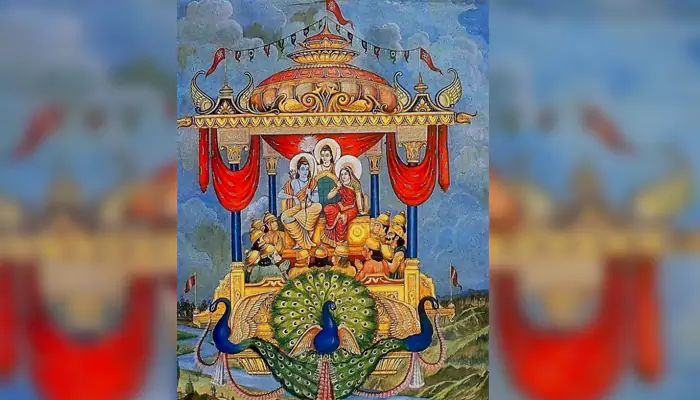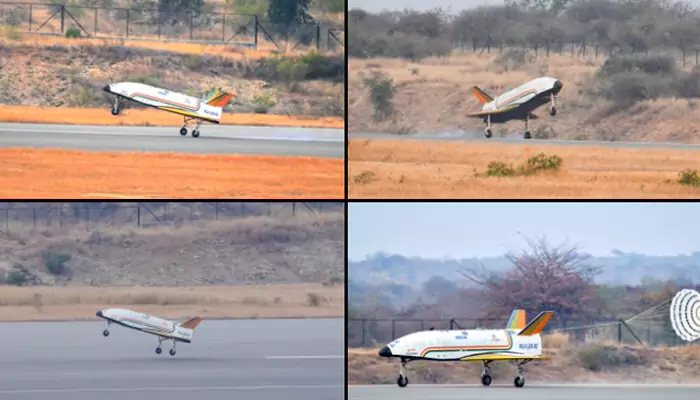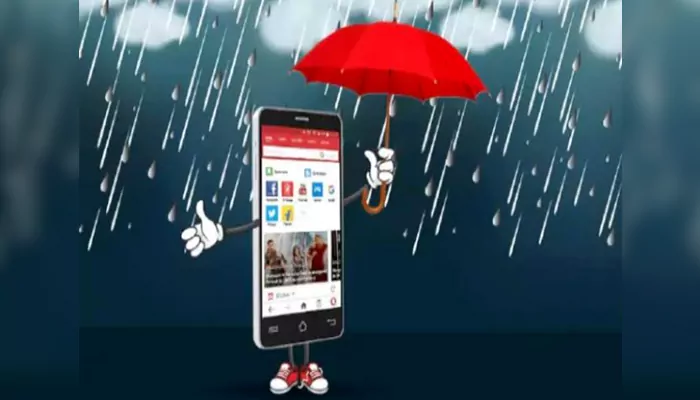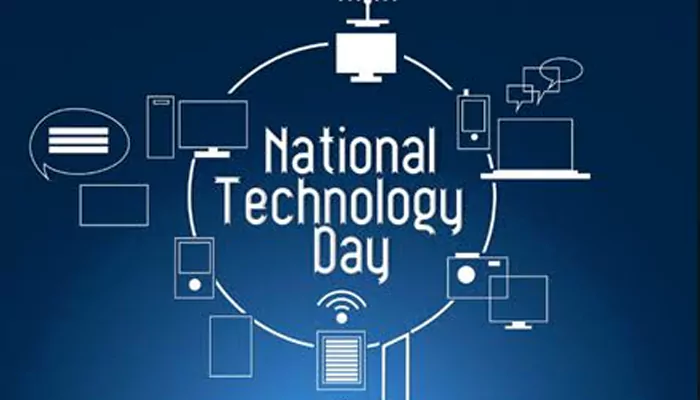Flying High From Mythology To Reality: Exploring Pushpak's Journey As ISRO Successfully Tests Reusable Vehicle
- Admin
- 1 year ago
- 3 minutes read

The Indian Space Research Organisation (ISRO) has successfully conducted the landing experiment of its Reusable Launch Vehicle (RLV) named ‘Pushpak’ today.
The rocket was launched from the Aeronautical Test Range (ATR) in Challakere, Karnataka, approximately 7 am on Friday. Previously, two successful landing experiments were conducted by ISRO in 2016 and April, 2023. This was the third landing experiment of the RLV named after the legendary spaceship, mentioned in the epic Ramayana.
Those, who are well aware of ancient Indian literature or Sanskrit, they will be highly impressed with the selection of name by ISRO.
In this article, we will discuss about the mythological reference and modern day Pushpak’s usability.
Pushpak in Mythology:
Have you ever thought, how people imagined about a flying vehicle nearly 5000 years ago? Some might have considered as a joke, aircrafts were fictionalized during the time of Ramayana epic.
In Sanskrit, aircraft is called ‘Vimana’, where ‘ ‘Vi’ and ‘mana’ indicate sky and measurement respectively. As per the epic, Lord Rama travelled back with brother Laxman and wife Sita from Lanka to Ayodhya after defeating Ravana by using ‘Pushpaka Vimana’.

Fiction or fact?
There is a long-standing controversy regarding the existence of Pushpak Viman. It was mentioned that, the specialized aircraft was designed and built by Vishwakarma for Lord Bramha, which he gave as a gift to God of wealth, Kuber. However, his step brother, the king of Lanka, Ravana stole the spacecraft from him.
What astonishes the researchers and historians mostly is the detailed explanation of the design of the spacecraft. When a Rig Veda verse is translated into English it describes; the “Vimana jumps into space speedily, with a craft using fire and water, containing 12 stamghas (pillars), one wheel, three machines, 300 pivots, and 60 instruments.”
Valmiki further described that the Pushpaka could be controlled by human brain as functions according to the traveller’s wish.
Was writer of Ramayana, Valmiki merely a great visionary or he already studied Aeronautics? Still remains a big question!
Pushpak develped by ISRO:
Let's discuss about modern science and the Reusable landing vehicle created by ISRO.
According to ISRO chairperson S Somanath: “The Pushpak launch vehicle is India's bold attempt to make access to space most affordable. It is India's futuristic Reusable Launch Vehicle, where the most expensive part, the upper stage, which houses all the expensive electronics, is made reusable by bringing it back safely back to Earth. Later, it could even do refuelling of in-orbit satellites or retrieving satellites from orbit for refurbishment. India seeks to minimise space debris and Pushpak is one step towards that as well.”
In last month, ISRO chief had briefed Prime Minister Narendra Modi about this ₹100 crores RLV mission project.

Uniqueness of Pushpak:
The recent Pushpak RLV is modelled as an all-rocket, totally reusable single-stage-to-orbit (SSTO) vehicle. It is equipped with key elements link the X-33 advanced technology demonstrator, the X-34 testbed technology demonstrator, and the upgraded DC-XA flight demonstrator.
According to ISRO, “Pushpak consists of a fuselage (body), a nose cap, double delta wings and twin vertical tails. It also features symmetrically placed active control surfaces called Elevons and Rudder.”
The configuration of Reusable Launch Vehicle – Technology Demonstrator (RLV-TD) resembles an aircraft combining the complexities of both a plane and a launch vehicle. It includes technologies of hypersonic flight, autonomous landing, as well as powered cruise flight.
RLV-LEX-02:
— ISRO (@isro) March 22, 2024
The approach and the landing. pic.twitter.com/hI9k86KiBv
Today's successful test reaffirms India's commitment towards space exploration using innovative technologies as well as successful execution.












